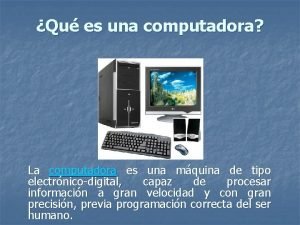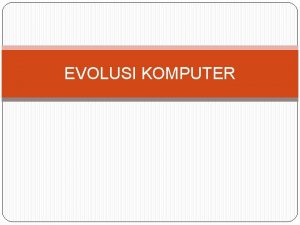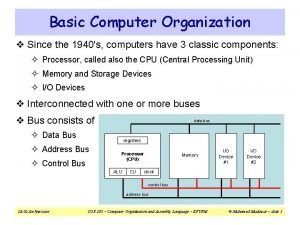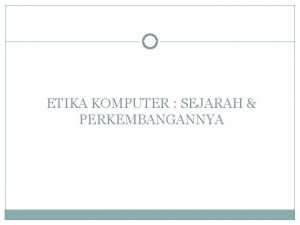History of Cost Controls 1940 1970 Virtually no

































- Slides: 33


History of Cost Controls 1940 -1970 Virtually no cost control 1970 -1980 Introduction of UC limits, deductibles and coinsurance 1980 -1990 Hospital Pre-admission authorization, surgical authorizations, utilization review 1990’s Managed care Present Consumer Driven Health Care – CDHC

Health Care Costs % of change

Drivers of Health Care Costs Prescription Drugs Hospital Costs Lifestyle choices Third party payer system

Drivers of Health Care Costs Prescription Drugs Increased Utilization Price Inflation Higher Cost Drugs Rx costs are projected to increased over 12% each year until 2010. Marketing directly to consumer. Patients are asking for namebrand drugs

Drivers of Health Care Costs Rising cost of hospital visits Outpatient costs are the fasting growing component of healthcare costs. Inpatient costs are being driven primarily by increasing hospital expenses per inpatient stay Rising costs per admission are driven in part by: Greater use of expensive technology Higher labor costs Hospital consolidations

Drivers of Health Care Costs Lifestyle choices Centers for Disease Control (CDC) estimates that U. S. obesity-attributable medical expenditures reached $75 billion in 2003

Drivers of Health Care Costs Third Party Payer People are not price sensitive in the market for health care as they are in the market for other goods and services because some third-party (Medicare or a private insurer) pays most of the cost of health services. Consumers do not know the true cost of health care.

How Employees View Health Care Costs A recent Hewitt Study shows employees don’t understand health care costs. 63% underestimate health insurance costs 69% overestimate how much they contribute to health insurance 57% are unsatisfied with their coverage

Consumer Driven Health Care (CDHC) refers to health plans in which employees have a personal health accounts such as a Health Savings Account or a Health Reimbursement Arrangement from which they pay medical expenses directly

Types of Consumer Driven Health Care HRA HSA FSA Health Reimbursement Account Health Savings Account Flexible Spending Account Who is eligible Employees and Retirees Employees Max Annual Contribution (2007) No maximum $2, 850 Individual $5, 650 Family No maximum Who owns Employer Employee Employer Who contributes Employer Only Employer or Employee Only Can employee earn interest on money No Yes No Can money roll over Yes No Is an HDHP required No Yes No Is it portable No Yes No Eligible for Cafeteria No Yes

Health Savings Accounts (HSA) What is an HSA? An HSA is a savings account where consumers invest money and then withdraw it, tax free, for eligible medical expenses. HSAs combine with high-deductible health insurance plans to give consumers more control -- and more responsibility -- over their health spending.

Health Savings Accounts (HSA) Who is Eligible To be eligible, an individual must be covered by an HSA-qualified High Deductible Health Plan (HDHP) and must not be covered by other insurance that is not HDHP. An individual may not be claimed as a dependent on another person’s tax return. In other words, dependent children cannot establish their own HSAs.

Health Savings Accounts (HSA) Other Insurance Certain types of insurance are permitted with an HSA Specific disease or illness Accident Disability Dental Vision Long Term Care Employee Assistance Programs Wellness Programs

Health Savings Accounts (HSA) Can employees have both an HSA and FSA? You can have both types of accounts, but only under certain circumstances. If you offer a “limited purpose” (limited to dental, vision or preventive care) FSA, then your employees can still be eligible for an HSA.

Health Savings Accounts (HSA) What's a High Deductible Health Plan Sometimes called "catastrophic" coverage, high-deductible insurance plans offer low premiums in exchange for a high deductible. For 2007, the minimum deductible is $1, 100 for individuals and $2, 200 for families.

Health Savings Accounts (HSA) What's a High Deductible Health Plan: With the exception of preventive care, you must meet the annual deductible before the plan pays benefits.

Health Savings Accounts (HSA) How much can you contribute to an HSA?

HSA Contribution Limits - 2007 HDHP Deductible Single Coverage Family Coverage Maximum HSA Contribution Minimum: $1, 110 $2, 850 $1, 500 $2, 850 $2, 000 $2, 850 $2, 500 $2, 850 $3, 000 $2, 850 Minimum: $2, 200 $5, 650 $3, 000 $5, 650 $4, 000 $5, 650 $5, 000 $5, 650 $6, 000 $5, 650

HSA Out of Pocket Limits - 2007 Maximum out-of-pocket limits for HDHP Single Coverage $5, 500 Family Coverage $11, 000

Health Savings Accounts (HSA) Eligible Expenses In general, funds from an HSA can be used for a wider range of expenses than covered by comprehensive insurance plans. HSAs cover routine doctors' appointments and prescriptions, and cash can be withdrawn to coverthe-counter medicines, such as aspirin and antihistamines. A partial list of eligible expenses is available in IRS publication 502.

Health Savings Accounts (HSA) These are not considered eligible expenses Health insurance premiums (Exceptions: LTC, COBRA, and for individuals over age 65 certain Medicare premiums) Expenses incurred BEFORE the HSA coverage is established. Expenses that are covered by your health care plan.

How are claims processed? Individuals typically receive a checkbook or debit card Individuals are responsible for paying providers as they are billed There is no “gatekeeper” to insure the charges are for qualified expenses During an IRS audit, it is the individual’s responsibility to prove that deductions for the account were for qualified medical expenses

Health Savings Accounts (HSA) Advantage to the School District Reduced Premiums Provide Incentives to employees to get Involved with healthcare decisions Encourage healthier staff

Health Savings Accounts (HSA) Advantages to the employee Money (including any employer contributions) belongs exclusively to the employee. Money can be invested and income earned grows tax-deferred. Unused balances carry over each year without limitations. Portable – Employees can take with them when they change jobs or retire.

How to add an HSA Review plan design specifics and determine level of employer involvement Limit medical offerings to one vendor to avoid adverse selection Outline eligibility Select a vendor and or HSA administrator Draw a clear line between the HSA and the health coverage to make it clear that there are two components

How to add an HSA Communicate clearly to staff – before, during and after implementation Share the savings from switching to a high deductible plan with the employees Make a one time contribution to the account. Ongoing contributions can be paid by the employee When you educate the employees, talk about the savings account first; the deductible second. During the first year, only a small percentage of employees will participate even if it is designed correctly. The second year – through word of mouth – generates greater participation.

How to add an HSA The two most predictive aspects of an employer’s success in offering an HSA are: 1. Whether or not they fund the account 2. How much the employer funds it.

Results and forecast A recent Pricewaterhouse Coopers survey of large employers who implemented an HSA: Reductions in prescriptions by 5 -25% Reductions in office visits by 5 -20% First year rate increases in the range of – 5% to +8% as opposed to +14% to +16% nationally In the first year alone, over 60% of CDHP enrollees had average HSA balances of $400 to roll over to the next year. According to Forrester projections, the number of HSAs will grow to more than 6 million in 2008. That number could triple to more than 18 million by 2012.

Results and forecast

Results and forecast

Interested in a quote for your district? Call Bill Baker 417 -882 -2992 Or e-mail: moeducators@ftj. com Forrest T. Jones & Company has worked with Missouri School Districts since 1953. We’d be happy to work with your School District to see how much you can save by introducing an HSA.

Resources: U. S Treasury Department for HSAs http: //www. ustreas. gov/offices/public-affairs/hsa/pdf/HSA-Tri-fold-english-07. pdf FSAFEDS www. fsafeds. com; 1 -877 -FSAFEDS(372 -3337) or TTY 1 -800 -952 -0450 OPM Web address for HSAs www. opm. gov/hsa U. S Treasury Department for HSAs www. ustreas. gov/offices/public-affairs/hsa For a list of qualified medical expenses that can be reimbursed through an HSA or HRA: www. irs. gov/pub/irs-pdf/p 502. pdf HSA Insider http: //www. hsainsider. com
 General controls vs application controls
General controls vs application controls He who controls the past controls the future
He who controls the past controls the future Internal and external assessment in strategic management
Internal and external assessment in strategic management Virtually anything is possible
Virtually anything is possible Competition in virtually all industries is
Competition in virtually all industries is Sabre virtually there
Sabre virtually there Rearden commerce
Rearden commerce Lutgens and tarbuck
Lutgens and tarbuck Self portrait with monkey
Self portrait with monkey Computador de 1940
Computador de 1940 Pakistan resolution meaning in urdu
Pakistan resolution meaning in urdu Computers in 1940
Computers in 1940 Ve day times square
Ve day times square Commonwealth act no 578
Commonwealth act no 578 Tiub hampagas
Tiub hampagas Baltic states 1940
Baltic states 1940 Modernisme 1905
Modernisme 1905 Regla de erwin chargaff 1940
Regla de erwin chargaff 1940 Helsingin olympialaiset 1940
Helsingin olympialaiset 1940 Edhint
Edhint Komputer generasi pertama
Komputer generasi pertama 1940s computer
1940s computer Lpetati
Lpetati Fashion 1930 to 1940
Fashion 1930 to 1940 Belankai
Belankai Krigslyrikk
Krigslyrikk From 1900 to 1940, research in nursing focused on:
From 1900 to 1940, research in nursing focused on: 1940 moda
1940 moda Self portrait 1889 by vincent van gogh
Self portrait 1889 by vincent van gogh Camaro 1940
Camaro 1940 Kallocain 1940 by karin boye
Kallocain 1940 by karin boye Muodin historia
Muodin historia Tom és jerry részek
Tom és jerry részek Ethicomp dan cepe
Ethicomp dan cepe

























































